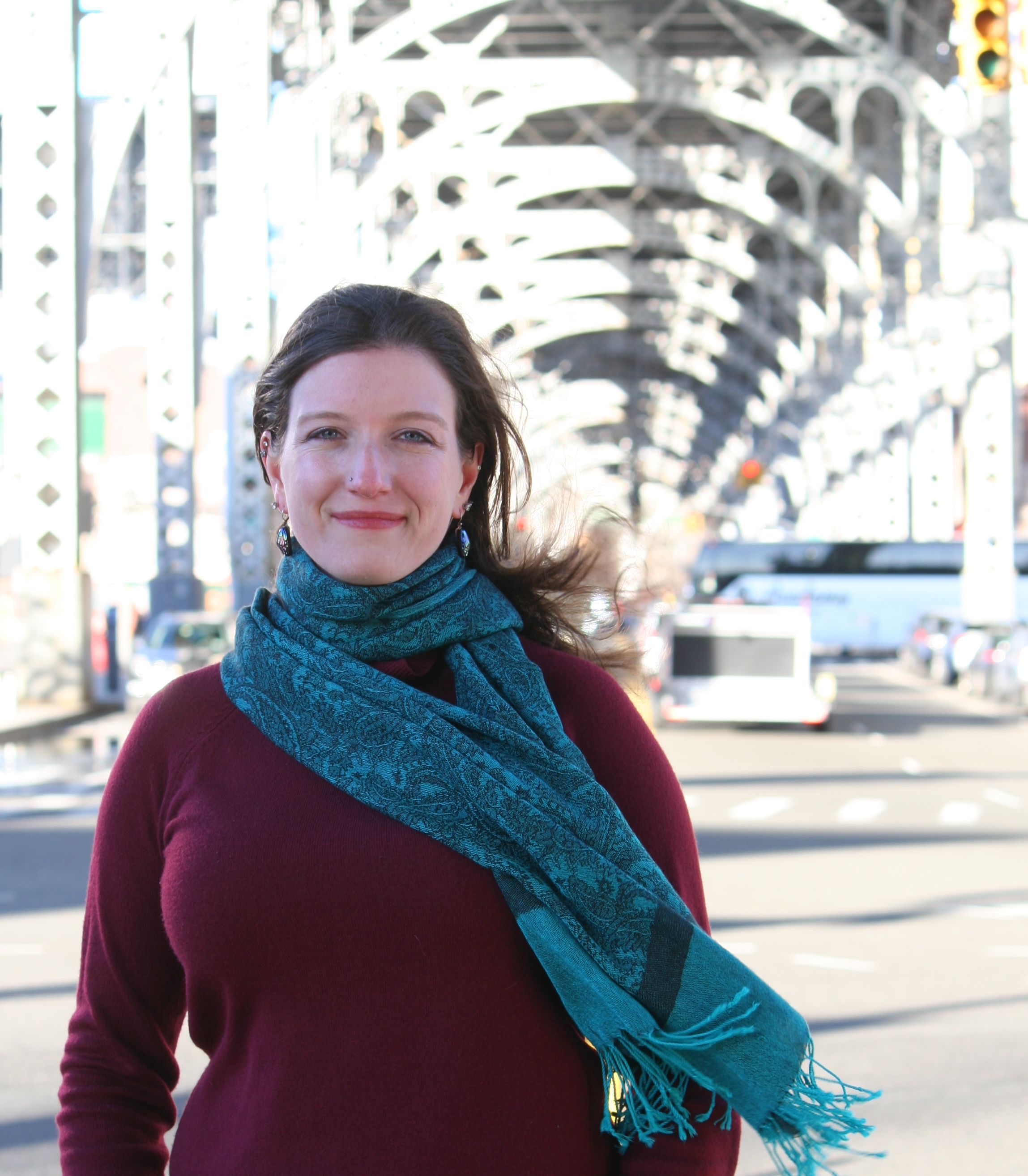Group Members
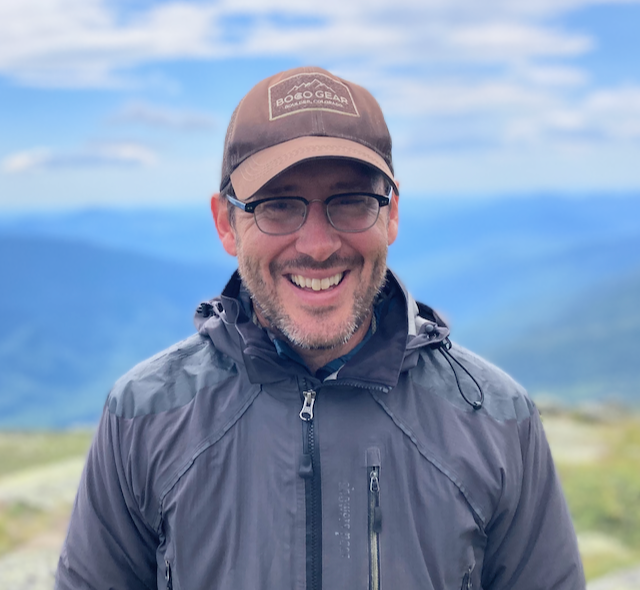
John Novembre
Professor
I got my start in this field through a combination of enjoying computer programming as a hobby and thinking about evolution as one of the world’s most fascinating natural processes. Now, my main research tackles statistical and theoretical problems to help enable discoveries about evolutionary processes and the nature of disease variation. Much of that work is in the context of human genetic variation, which is doubly fascinating because of the connections to fields like linguistics, archaeology, and history. For my training, I earned my undergrad degree in biochemistry at the Colorado College, studied for my PhD in Integrative Biology (with a designated emphasis in Computational Biology & Genomics) at UC-Berkeley under Montgomery Slatkin, and did a postdoc in Human Genetics at Chicago with Matthew Stephens. My first faculty position was in the Ecology and Evolutionary Biology Department at UCLA and then I returned to the University of Chicago in 2013. Outside of my work I enjoy travel, music, and a variety of different outdoor sports.
Carla Hoge
Chicago Postdoctoral Fellow
Carla studied the evolution of meiotic recombination localization in vertebrates during her PhD with Dr. Molly Przeworski. She is broadly interested in using genomics and population genetics to learn about biology in non-model organisms. Carla is currently using popgen to study corals from the Great Barrier Reef.

Marida Ianni-Ravn
PhD Student in the Human Genetics Program
Marida is interested in studying how genetics and the environment interact to create geographic patterns of variation in complex traits - and the implications of this on GWAS. Before coming to Chicago, she earned an MSc in Bioinformatics from the University of Copenhagen, where she was exploring the genetics of dietary adaptation in the Stone Age, in the Racimo lab. (When not at her desk, Marida can be found painting portraits and learning to dance the Electric Boogaloo.)

Sherif Negm
PhD Student in the Human Genetics Program
Sherif is broadly interested in evolutionary and population genetics. His current research focuses on the interaction between long distance dispersal and local adaptation, as well as the evolution of quantitative traits under stabilizing selection. Prior to joining the lab, he graduated from University of Rochester with a BS computational biology and BA data science, where he studied population genetics and evolution of tandem repeats in fruit flies in larracuente lab. Outside of work, Sherif enjoys playing chess and skateboarding.
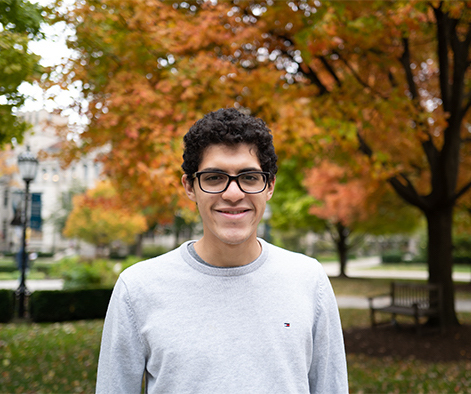
Ahmed Selim
PhD Student in the Biophysics Program
Ahmed is broadly interested in understanding how the history of the ancestors of a population affects its observed genetic variation, and how this history can be understood from such observation. He is particulary interested in building and sharing a more realistic understanding of the relationship between individuals in a population, and between the ancestors of these individuals.
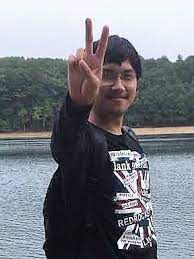
Hao Shen
Postdoctoral fellow
Hao’s expertise is in theoretical population genetics and statistical genetics. His PhD work included an analysis of causal inference in the presence of direct and indirect genetics effects. For his postdoctoral research, he will be investigating models of time-varying migration rate in spatial population genetics.
Alumni
After more than ten years now as a lab, we have an even spread of alumni that have gone into academics and industry. Thus far, geographically our alumni can be found in the United States, Mexico, Canada, Switzerland, and Germany. While we work in a university setting and train ourselves in the practice of research and teaching, this prepares our alumni for a broad set of careers.
- Luke Anderson-Trocmé: Postdoctoral fellow, 2023-2025. Assistant Professor, Université de Montréal.
- Maggie Steiner: PhD student in Human Genetics, 2025. Consultant, BCG.
- Vivaswat Shastry: PhD student in the Genetics, Genomics, and Systems Biology Program, 2025. Postdoctoral researcher, University of Chicago.
- Xinyi Li: PhD student in the Genetics, Genomics, and Systems Biology Program, 2025. Postdoctoral scholar, Stanford University.
- Hannah Moots: Postdoctoral Fellow, 2021-2023. Postdoctoral Researcher, Centre for Palaeogenetics in Stockholm.
- Heather Skeen: PhD student in the Committee on Evolutionary Biology, 2022. Postdoctoral fellow, Universisty of Conneticut.
- Mashaal Sohail: Chicago Fellow, 2019-2021. Associate Professsor, UNAM.
- Chi Chun Liu: Masters student, 2019-2020. Machine learning engineer, Prooton, Inc.
- Arjun Biddanda : PhD in Human Genetics, 2020. Postdoctoral Fellow, Johns Hopkins University.
- Dan Rice: Chicago Fellow, 2017-2020. Data Scientist Outreach Coordinator at NCBI.
- Joe Marcus: PhD in Human Genetics, 2020. Bioinformatic Scientist at Grail, Inc.
- Harald Ringbauer: Postdoctoral fellow, 2018-2019. Group leader at Max Planck Institute for Evolutionary Anthropology.
- Christian Porras : Undergraduate researcher. Now an MD/PhD student at the Icahn School of Medicine at Mount Sinai.
- Hussein Al-asadi: PhD student in Committee of Evolutionary Biology, Masters in Statistcs, 2018. Data scientist at Adaptive biotech.
- Evan Koch: PhD student in Ecology & Evolution, 2018. Postdoctoral fellow with Shamil Sunyaev at Harvard.
- Joel Smith: PhD student in Ecology & Evolution, 2018. Scientist at Zymeworks.
- Ben Peter: Postdoctoral Fellow, 2014-2017. Group leader at Max Planck Institute for Evolutionary Anthropology.
- Mark Reppell: Postdoctoral Fellow, 2014-2017. Senior scientist at Abbvie Genomics.
- Diego Ortega Del Vecchyo: PhD student in Bioinformatics, 2016. Group leader, Institute for Human Genomics in Mexico.
- Charleston Chiang: Postdoctoral Fellow, 2011-2015. Assistant Professor, Center for Genetic Epidemiology, Keck School of Medicine of University of Southern California.
- Alex Platt: Research Associate, 2011-2014. Research Assistant Professor, Center for Computational Genetics and Genomics at Temple University.
- Eunjung/Christine Han: PhD student in Biostatistics, 2014. Research Scientist at Amazon Alexa Machine Learning.
- Darren Kessner: PhD student in Bioinformatics, 2014. Computer science faculty at Marlborough School.
- Adam Freedman: NSF Bioinformatics Postdoctoral Fellow, 2009-2012. Data Scientist in the Faculty of Arts and Sciences Informatics Group at Harvard University.
- Colin Rundel: PhD student in Statistics, Joint advised with Jan de Leeuw, 2012. ‘Professor of the practice’ at Duke.
- Daniel Wegmann: Postdoctoral fellow, 2009-2011. Professor in Computational Biology, University of Fribourg.
- David Alexander: PhD student in Biomathematics and Collaborator advised by Ken Lange. 2011. Bioinformatics at Google.
- Krishna Veeramah: Center for Society and Genetics Postdoctoral fellow, 2008-2010. Associate Professor, Department of Ecology & Evolution, Stony Brook University.
Photo Gallery
A small sampling from over the ages…
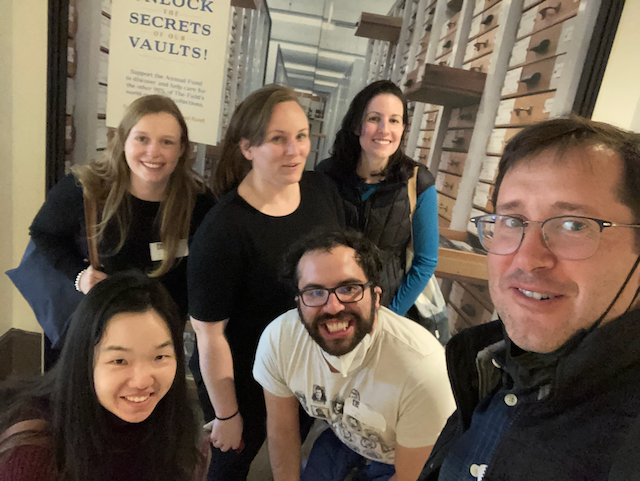
Lab trip to the Field Museum to see Heather’s samples and the broader bird collection, Spring 2022
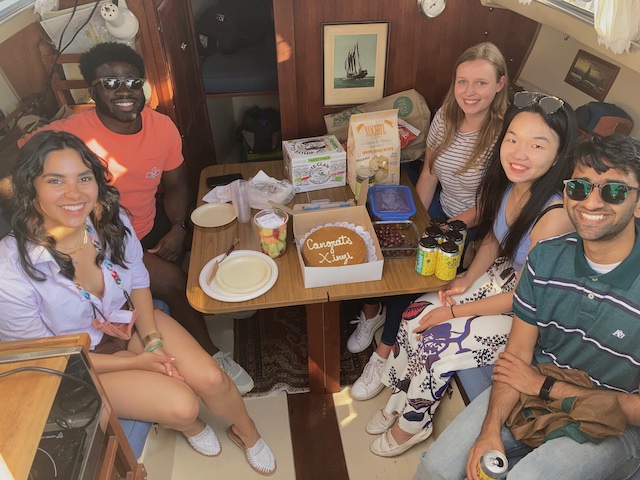
Celebrating Xinyi’s prelims on John’s boat and with friends of the lab, Summer 2021
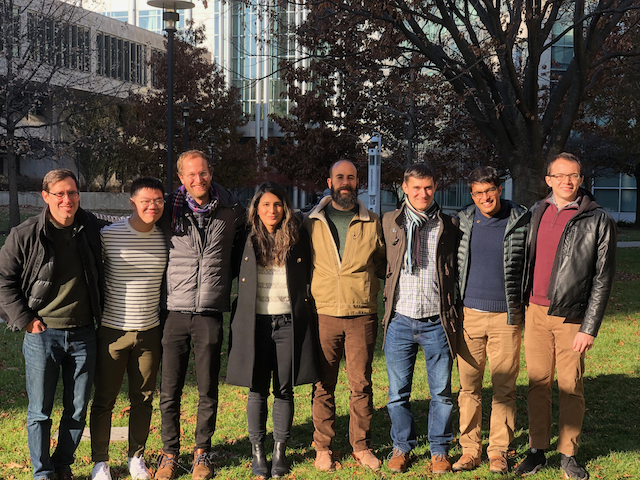
Lab photo, Fall 2019

Lab and friends’ send-off for Jonatas, Summer 2019

Lab dinner showing Harald Chicago BBQ, Fall 2017
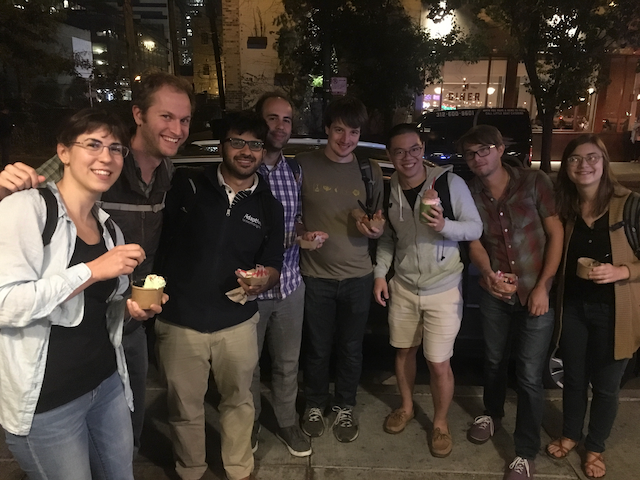
Lab dinner and dessert, 2016
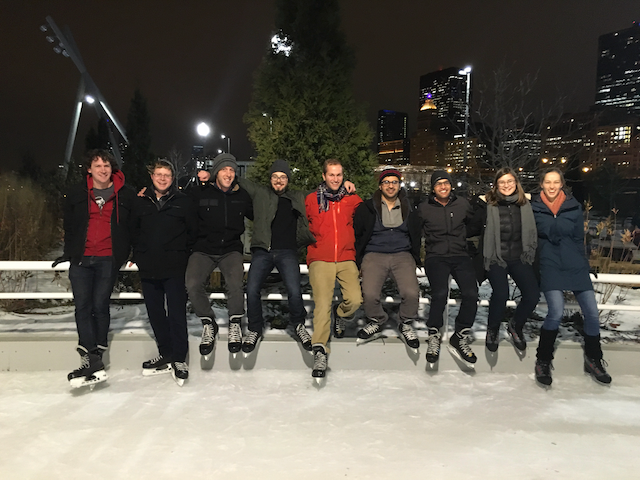
Lab skating at the Maggie Daley Park Skating Ribbon with Jeremy and Meredith, Winter 2016
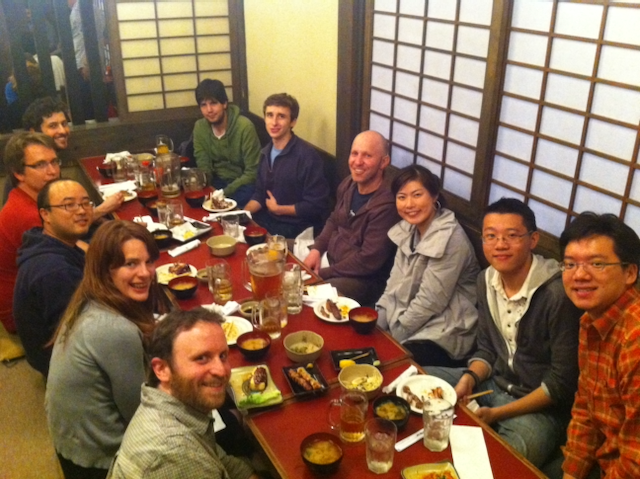
Novembre Lab and friends, Spring 2012
